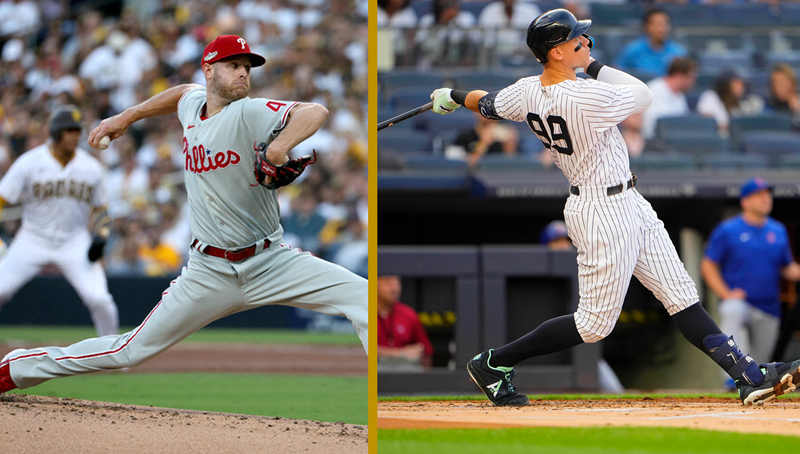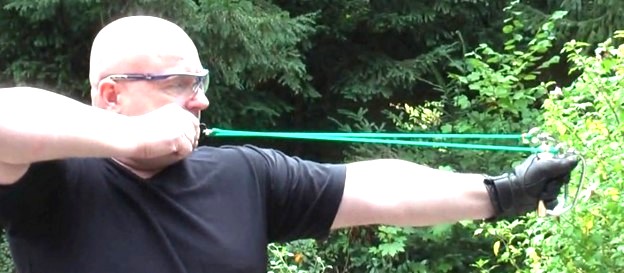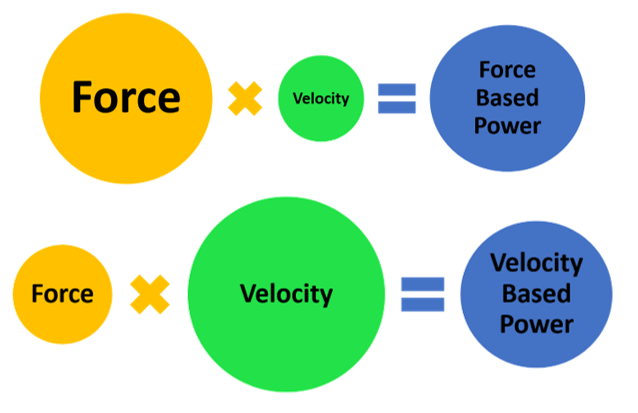
Rotational power is pure gold for training rotational athletes such as baseball players. Whether you are a pitcher or a position player, it serves not only as the bridge for transferring lower body strength and power to the upper body, but also is ground zero for initiating that force and sending it into the lower half to be absorbed by the ground. This is known as Ground Reaction Force, a major player in helping to increase angular velocities up the chain and eventually into the ball and bat.
The key factor here though is amount of TIME it takes to transfer that force. Whether throwing a pitch or hitting a baseball, the race is short. So, it is about how quickly the car (the core) can get off the line. This is otherwise known as Rate of Force Development (RFD) and is best achieved by taking advantage of what is referred to as the stretch-shortening cycle (SSC).
SSC is described as a rapid cyclical muscle action whereby the muscle undergoes an eccentric contraction (loading), followed by a transitional period prior to the concentric contraction (unloading). This makes it the ultimate mechanism for better enhancing performance and providing efficiency and economy of movement. Much like the use of a slingshot.

But training the core is a topic that historically gets “no love” and is trained using generic methods that only work on strengthening the core, but not taking into account how quickly it can develop and release force/power (RFD) through the use of the SSC.
Yes – all athletes need to be strong, but once an athlete demonstrates adequate strength, to increase power further, they then need to focus on producing that strength (force) quickly. But we first need to know which side of the power curve an athlete relies more on, Force or Velocity, then build up their weaker side.
Understanding the Power Curve
There are two main components in the power equation:
Force-based (strength) and Velocity-based (elasticity)
Athletes create power by combining these two traits. Different athletes tend to rely on one of these two qualities more than the other. Lets take a look:
Force-based athletes – Increased Total Force Output (strength)
Why: Increased resiliency via thicker tissues / cross sectional muscle fiber (more muscle!)
Relies more on the force side of the equation to create power
Elastic-based athletes – Faster Rate of Force Development
Why: Increased contractile velocity (elasticity)
Relies more on use of the Velocity side of the equation to create power
The example below shows 2 types of athletes, both of whom produce the SAME amount of power, but in two completely different ways:
-
- Athlete #1 – Is the Force-based athlete and relies more on ability to produce muscular force
- Athlete #2 – Is the Velocity-based athlete and relies more on elasticity / SSC

*** Photo Courtesy of Ty Terrell
While these two types of athletes create the same amount of power, they are relying on their SSC in different ways. It’s really the perfect COMBINATION of BOTH force and velocity that creates a high velocity throw or higher exit velo at the plate! So, when training these individuals, we need to first assess THEIR LIMITING FACTORS. Is it Force or Velocity? And then give them more of what they need in their training without sacrificing the other attribute, as in grow the smaller circle to get even more power out of the system.
The image below shows how these different combinations put each of these athletes on different sides of the power curve and thus need a different type of training:
-
- Athlete #1 (more Force, less Velo) – Needs to work in Strength/Speed
- Athlete #2 (more Velo, less Force) – Needs to work in Speed/Strength

But how do we know what type of athlete we are looking at?
Enter Proteus Motion
The Proteus Motion machine is a highly advanced piece of technology that gives the ability to measure Power & Acceleration in all planes of motion (3D) while providing constant resistance through a full range-of-motion. This makes it the most practical method available for measuring upper body rotational power and acceleration.

The following Proteus Motion tests provide us with very specific information on the elastic nature of the core, which in turn helps us determine how to train it.
Counter Rotation (SSC) – The Proteus counter rotation test involves a quick counter movement (eccentric) prior to the main rotational movement (concentric) making. This involves using the SSC making it a “true plyometric movement, more characteristic of a “velocity-based athlete”.
Proteus Counter Rotation
Non-Counter Rotation (Concentric-only) – The Proteus non-counter rotation does not contain the eccentric movement making it a “concentric only” movement, more characteristic of a “force-based athlete.”
Proteus Non-Counter Rotation
Training the Results
OK – What now? How do we train it?
VELO-based Athlete – An athlete who scores higher on the counter rotation uses his SSC more than force to create power and needs to work on exercises that help to increase “total force output”.
-
- What they have – Thin Rubber Bands, Elasticity, Rate of Force Development
- What they need – Rigidity, Total Force Output
This can be accomplished by strength training exercises with isometric holds
Bench Press w/ Pause
FORCED-based Athlete – An athlete who scores higher on the non-counter rotation uses more force (muscular effort) to create power and needs to work on exercises that help to increase elasticity and faster rate-of-force development.
-
- What they have – Thick Rubber Bands, Rigidity, Total Force Output
- What they need – Elasticity, Rate of Force Development
This can be accomplished by adding low level plyometric drills to his/her strength training program. These are low-impact drills with short contact times (under .250 ms).
Pogo Jumps
Rapid Med Ball Chest Pass
Case Study – Below are some “before and after’s” to show the ability to shift an athlete’s curve. Here we can see in both types of athletes, training was shifted, and re-assessing showed marked improvements in both.

Summary
Being able to measure core power and acceleration in all planes of motion allows us to evaluate core performance in ways we could not before. This also allows us to better individualize programming based off what the athlete needs more of, whether it be force or velocity.
See ya’ in the gym…
By Nunzio Signore (BA, CSCS, CPT, NASM, FMS)
Related Studies / Articles:
-
- Ty Terrell & Tony Giulliano – “Practical Applications of Velocity-Based Training”
- Zach Kollar – “Understanding and Applying Proteus Motion with Baseball Players”
- Dr Brian Mann – “Developing Explosive Athletes”
If you’d like to be added to our email list, please enter your information below!
